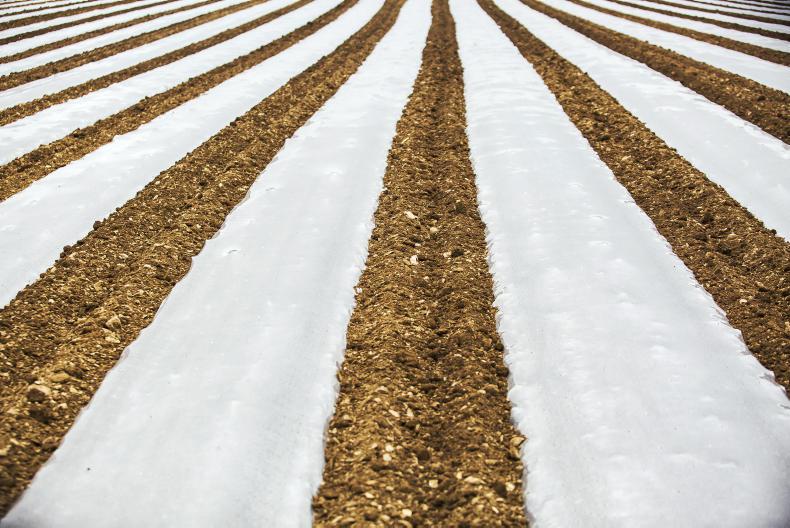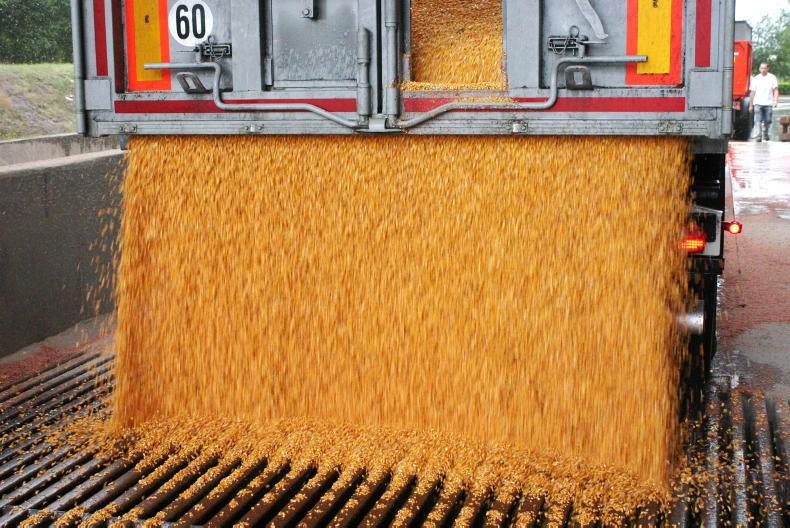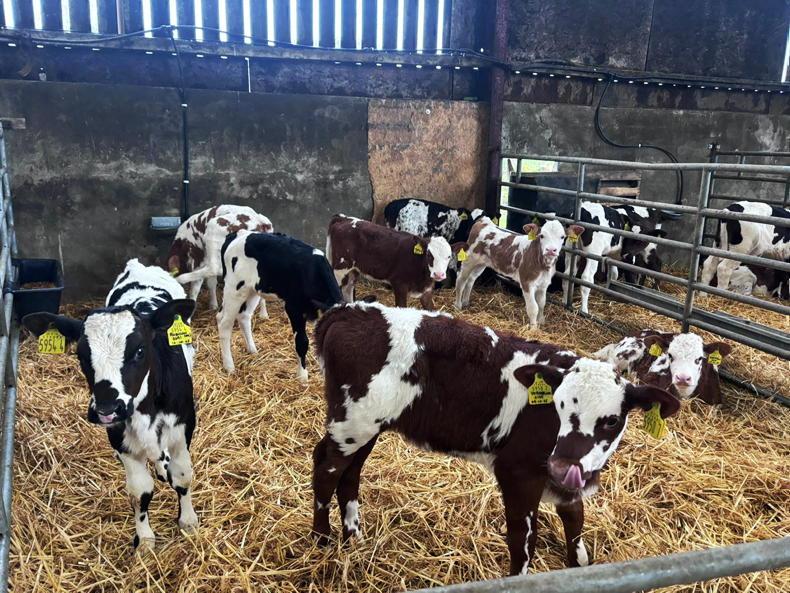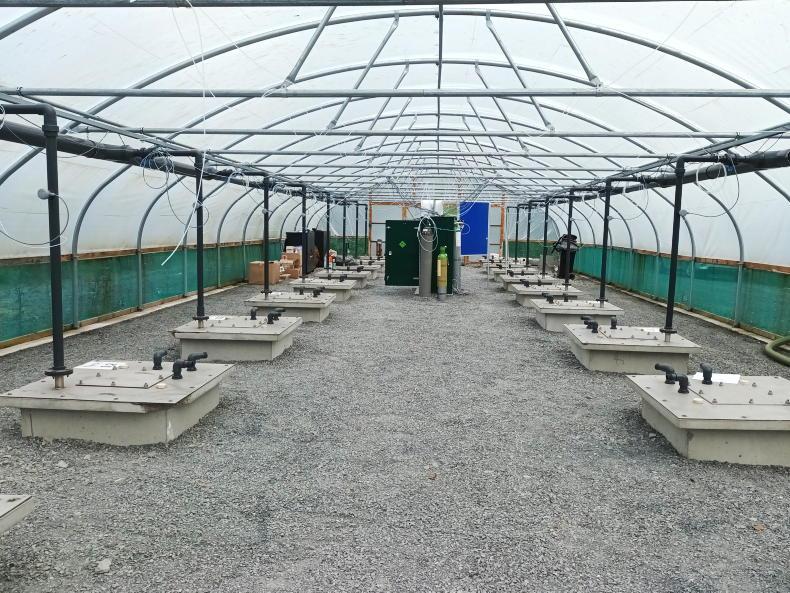Forage maize area in Ireland peaked with a high of just over 24,000ha in 2009. The area then fell, stabilised at around 13,000ha to 14,000ha for a number of years but fell to approximately 11,000ha in recent years.
The increase in the area sown to maize has become clearly evident from the roadside in recent weeks. Suggestions from preliminary Department data indicate a 40% increase in area planted this year. Those in the trade who sell seed, film and herbicide suggest that the final figure could show a 50% to 70% increase in area. Maize seed is continuing to be sold with reports of some being sown following first-cut silage. This is clearly on the back of a late spring for tillage farmers and a requirement to replenish forage reserves for livestock farmers.
An increase in maize production to meet anticipated demand for forage and nutrient requirements from the dairy sector was an action point in the FoodWise 2025 strategy document. The majority of the maize this year has been planted in May and under film (85% normally sown with film), which is a month, or more, later than normal for maize established with degradable film cover.
Forage maize needs as long a growing season as it can get to extend the period between tasselling/silking and harvest. This is important to maximise grain maturity and plant dry down.
Increasing yield
In order to push yields and decrease cost per tonne harvested, growers may be considering options to maximise yield in the next few weeks. One such option would be a second application of nitrogen fertiliser post emergence. People often remark on how plants look to be struggling when they emerge from under film and they ask if a boost could be useful.
In UCD, we have been evaluating the inorganic nitrogen application programme for forage maize over the last few years. This is an awkward objective given the added complexity of working with a degradable film establishment system which we largely have here in Ireland.
Nitrogen programme – rate of N
The first series of trial work was conducted at UCD Lyons Farm where the soil type is described as a clay loam and the preceding cropping history would be a rotation of grass/clover and winter wheat/ winter barley. This history would categorise this site as N-rich. All of the experimental plots received 33m3/ha of cattle slurry prior to ploughing.
In Figure 1, the response of whole crop, stover and cob yield to inorganic N (0, 50, 100, 150kg N/ha) applied to the seedbed is shown. While there was a response from whole crop yield to increasing N, an additional 8.2kg DM/kg fertiliser N is a relatively low response rate.

When we divided the harvested plants into their components, we found a significant difference in stover yield in response to N but not in cob yield. Thus, the resulting feeding value of the harvested whole crop showed a decrease in starch percentage and ME content as N application rate increased (Table 1). The lack of response to increasing N in this series of trial work reflects the high soil mineral status of the experimental site.
As a follow on from this, we applied the same treatments to a continuous tillage site in 2016 that would not have received any organic slurry/FYM in the preceding years, in addition to a concurrent replicate site at UCD Lyons Farm. With 0kg N applied, the Lyons site harvested 128kg of whole crop nitrogen, compared with the continuous tillage site which harvested 95kg N/ha.
Figure 2 shows the yield response from whole crop forage maize to inorganic N application rates (0kg, 50kg, 100kg, 150kg N/ha) at both sites. The site that had come from continuous tillage responded to increasing N application, with a response rate of 23kg DM/kg fertiliser N, or an additional 3.5t DM/ha from 0kg N to 150kg N/ha, which would cost ~€116/ha for urea for the additional tonnage of whole crop harvested. This tells us that site classification for N status is very important when finalising N programme for forage maize.

Nitrogen programme – timing of N
In addition to the total rate of inorganic N applied, we also examined the timing of these rates. The conventional approach of incorporating all N in the seedbed prior to planting was compared with an alternative of applying 50% of total N requirement in the seedbed and 50% after emergence at around the V6-V8 growth stage (approximately 75 days post-sowing in our trial work).
The research found no yield benefit in terms of final harvest whole crop, grain or cob yield. However, it found a quality benefit due to less stover proportion in the harvested whole crop (Table 2). In addition there was an increase in nitrogen use efficiency by applying a split application programme at a low N site compared with a high N site.
We also applied both granular CAN and foliar sources of N for the second application. While these caused leaf damage and scorch respectively, they showed no effect on yield or feeding value parameters at harvest.
The Maize Guide
In 2017, the forage maize industry, in conjunction with Teagasc, published ‘The Maize Guide’ which is a guide to growing, conserving and feeding maize silage. This is available on the Teagasc website, and will help enable informed decision for those growing, trading or feeding maize silage in 2018.
Acknowledgement: the authors would like to thank the Teagasc Walsh Fellowship Programme and The Agricultural Trust for funding for this project.In short
Response to nitrogen application in maize will vary with site, as with other crops.Applying the total N as half in the seedbed and half post emergence had no effect on crop yield.Applying half of the N post emergence did improve crop quality by decreasing the amount of stover produced.
Forage maize area in Ireland peaked with a high of just over 24,000ha in 2009. The area then fell, stabilised at around 13,000ha to 14,000ha for a number of years but fell to approximately 11,000ha in recent years.
The increase in the area sown to maize has become clearly evident from the roadside in recent weeks. Suggestions from preliminary Department data indicate a 40% increase in area planted this year. Those in the trade who sell seed, film and herbicide suggest that the final figure could show a 50% to 70% increase in area. Maize seed is continuing to be sold with reports of some being sown following first-cut silage. This is clearly on the back of a late spring for tillage farmers and a requirement to replenish forage reserves for livestock farmers.
An increase in maize production to meet anticipated demand for forage and nutrient requirements from the dairy sector was an action point in the FoodWise 2025 strategy document. The majority of the maize this year has been planted in May and under film (85% normally sown with film), which is a month, or more, later than normal for maize established with degradable film cover.
Forage maize needs as long a growing season as it can get to extend the period between tasselling/silking and harvest. This is important to maximise grain maturity and plant dry down.
Increasing yield
In order to push yields and decrease cost per tonne harvested, growers may be considering options to maximise yield in the next few weeks. One such option would be a second application of nitrogen fertiliser post emergence. People often remark on how plants look to be struggling when they emerge from under film and they ask if a boost could be useful.
In UCD, we have been evaluating the inorganic nitrogen application programme for forage maize over the last few years. This is an awkward objective given the added complexity of working with a degradable film establishment system which we largely have here in Ireland.
Nitrogen programme – rate of N
The first series of trial work was conducted at UCD Lyons Farm where the soil type is described as a clay loam and the preceding cropping history would be a rotation of grass/clover and winter wheat/ winter barley. This history would categorise this site as N-rich. All of the experimental plots received 33m3/ha of cattle slurry prior to ploughing.
In Figure 1, the response of whole crop, stover and cob yield to inorganic N (0, 50, 100, 150kg N/ha) applied to the seedbed is shown. While there was a response from whole crop yield to increasing N, an additional 8.2kg DM/kg fertiliser N is a relatively low response rate.

When we divided the harvested plants into their components, we found a significant difference in stover yield in response to N but not in cob yield. Thus, the resulting feeding value of the harvested whole crop showed a decrease in starch percentage and ME content as N application rate increased (Table 1). The lack of response to increasing N in this series of trial work reflects the high soil mineral status of the experimental site.
As a follow on from this, we applied the same treatments to a continuous tillage site in 2016 that would not have received any organic slurry/FYM in the preceding years, in addition to a concurrent replicate site at UCD Lyons Farm. With 0kg N applied, the Lyons site harvested 128kg of whole crop nitrogen, compared with the continuous tillage site which harvested 95kg N/ha.
Figure 2 shows the yield response from whole crop forage maize to inorganic N application rates (0kg, 50kg, 100kg, 150kg N/ha) at both sites. The site that had come from continuous tillage responded to increasing N application, with a response rate of 23kg DM/kg fertiliser N, or an additional 3.5t DM/ha from 0kg N to 150kg N/ha, which would cost ~€116/ha for urea for the additional tonnage of whole crop harvested. This tells us that site classification for N status is very important when finalising N programme for forage maize.

Nitrogen programme – timing of N
In addition to the total rate of inorganic N applied, we also examined the timing of these rates. The conventional approach of incorporating all N in the seedbed prior to planting was compared with an alternative of applying 50% of total N requirement in the seedbed and 50% after emergence at around the V6-V8 growth stage (approximately 75 days post-sowing in our trial work).
The research found no yield benefit in terms of final harvest whole crop, grain or cob yield. However, it found a quality benefit due to less stover proportion in the harvested whole crop (Table 2). In addition there was an increase in nitrogen use efficiency by applying a split application programme at a low N site compared with a high N site.
We also applied both granular CAN and foliar sources of N for the second application. While these caused leaf damage and scorch respectively, they showed no effect on yield or feeding value parameters at harvest.
The Maize Guide
In 2017, the forage maize industry, in conjunction with Teagasc, published ‘The Maize Guide’ which is a guide to growing, conserving and feeding maize silage. This is available on the Teagasc website, and will help enable informed decision for those growing, trading or feeding maize silage in 2018.
Acknowledgement: the authors would like to thank the Teagasc Walsh Fellowship Programme and The Agricultural Trust for funding for this project.In short
Response to nitrogen application in maize will vary with site, as with other crops.Applying the total N as half in the seedbed and half post emergence had no effect on crop yield.Applying half of the N post emergence did improve crop quality by decreasing the amount of stover produced. 











SHARING OPTIONS